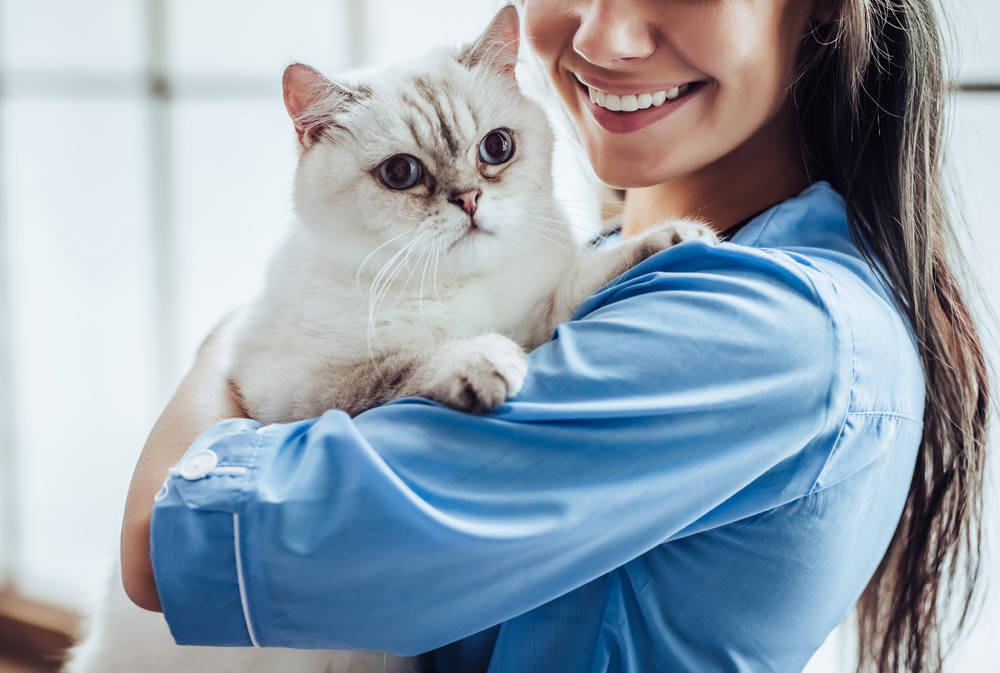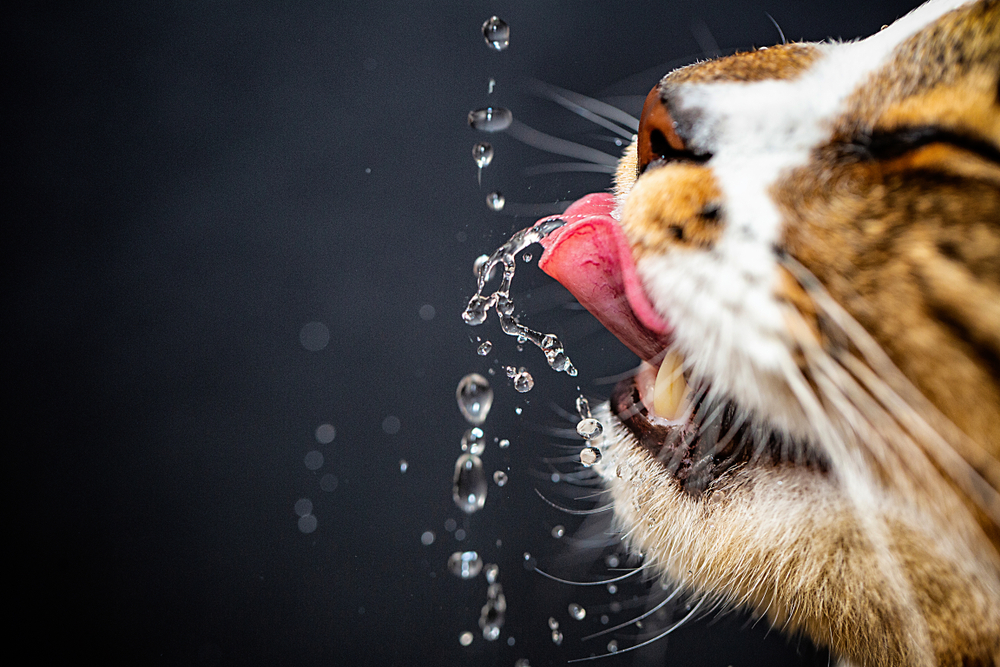Although your cat may not seem to need much water, staying hydrated is important. Cats are prone to urinary issues and kidney disease, which dehydration can exacerbate. Encouraging your feline friend to drink more can help protect their organs, maintain an appropriate electrolyte balance, and promote overall health.
However, cats are notoriously finicky, especially about their water supply. Stagnant, dirty water can turn your cat off drinking, and the bowl shape or material can keep them from quenching their thirst.
Implement our Animal Care & Emergency Services team’s tips for boosting your feline’s water intake and ensuring they are properly hydrated.
#1: Keep your cat’s bowls and water clean
If the only watering hole available for your cat is coated with mastiff slobber, they’ll likely go without rather than drink slimy water. Give your cat their own water bowl, refresh the water once or twice a day, and clean the bowl thoroughly by hand or in the dishwasher at least weekly. Throughout the day, check your cat’s water bowl to ensure nothing has fallen in and the bowl is still clean.
#2: Try different water bowls
If your cat’s water is offered in a two-in-one food and water bowl, they may not drink as much as they should. These dishes are often too small for cats to drink from comfortably, because they bump their sensitive whiskers against the side, which can be painful.
Instead, provide your cat with a variety of bowls, from wide, shallow dishes, to tall glasses. Some cats prefer to sip out of your container, so set out a glass of water to see what your pet thinks. Avoid residual odors and flavors by swapping out plastic bowls for glass or ceramic dishes, which are easier to clean and do not harbor as many bacteria.
#3: Make water access easy
Consider where your cat’s water bowl is placed. Can your cat reach their bowl easily? Do they feel trapped when they drink? To ensure they are drinking enough, put water bowls in every room your cat can access. Do not place bowls in corners, next to litter boxes, or locations that your cat has trouble reaching (e.g., the basement, top floor).
#4: Serve more frequent meals
Cats often drink after they eat, so feeding your cat more frequently in smaller portions can increase their water intake. You can also reduce your cat’s portion size, and offer small treat amounts throughout the day.
#5: Switch to canned food
Dry kibble is about 10% moisture, whereas canned food contains roughly 70% water, so you can greatly increase your cat’s water intake by feeding them canned food. However, if your cat has never eaten canned food, they may be suspicious of the texture and consistency, but you can entice them by heating up the canned food, mixing a small amount with their dry food, or offering a small amount as a treat.
#6: Offer running water
Does your cat sprint to running water that they hear? If your cat has ever joined you in the shower or at the kitchen sink to lap at the water spray, invest in a pet drinking fountain. The continuous stream of running water can encourage your cat to drink more.
#7: Schedule an exam with your veterinarian

If your cat seems to have difficulty drinking, they may have an underlying health issue. Dental disease, oral cancers, nausea, and osteoarthritis pain are common problems that can make drinking more arduous for a cat. Watch your cat carefully as they head to their water bowl. Do they struggle to bend down on stiff, painful joints? Do they take a drink, only to paw at their mouth and yowl in discomfort? Do they lick their lips as they gaze longingly at the water? These signs are important clues for your primary care veterinarian to make a diagnosis.
Without adequate water intake, your cat can rapidly become dehydrated, especially if they have kidney disease, urinary problems, diarrhea, or are vomiting. If your cat is struggling to drink, contact our Animal Care & Emergency Services team for help in encouraging them to drink enough to stay hydrated.







Leave A Comment